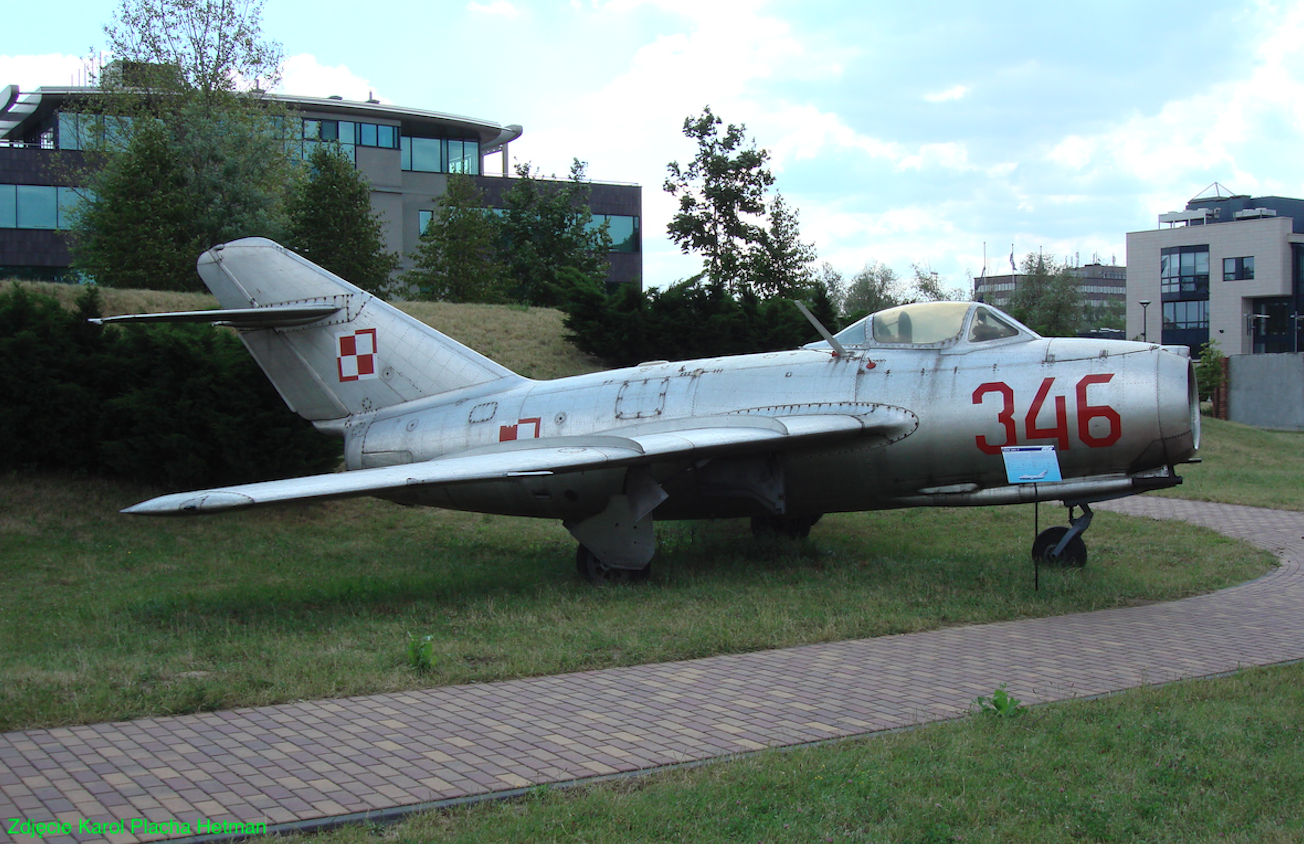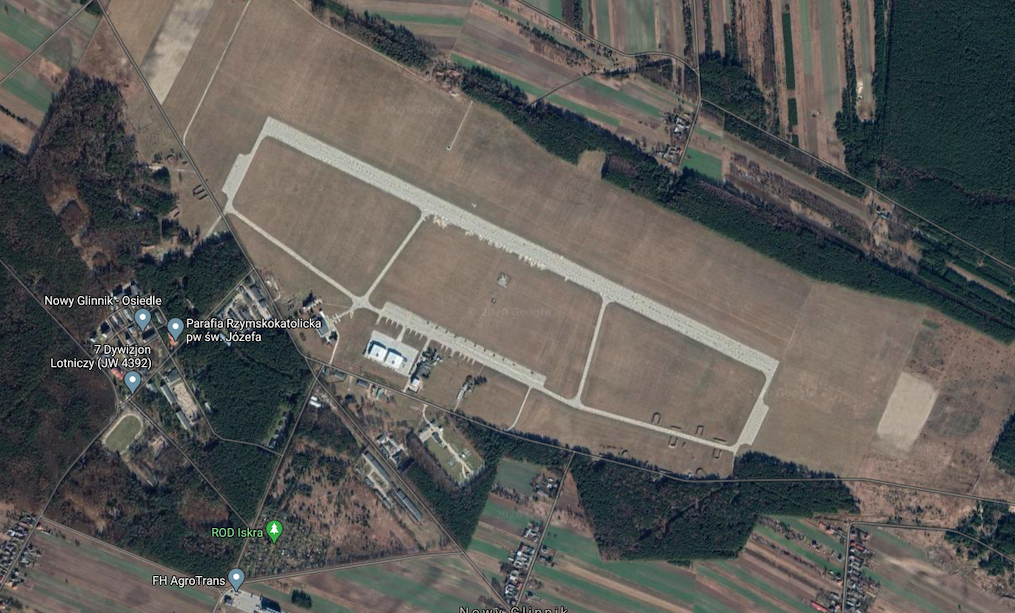Kraków 2011-12-29
63 Lotniczy Pułk Szkolno-Bojowy
1958 rok.
Historia
W 1958 roku, rozpoczął się nowy etap reorganizacji szkolnictwa lotniczego w Polsce. Nowy, nowoczesny sprzęt wymagał innego, znacznie rozbudowanego systemu zaopatrzenia i zabezpieczenia. W nowych założeniach, podchorąży w czasie 3-letniego szkolenia miał uzyskać większy niż dotychczas nalot. Płody pilot powinien opuszczać mury uczelni z łączmy nalotem 215 godzin; 115 godzin na samolotach szkolnych i 100 godzin na samolocie bojowym.
Wobec tego postanowiono na bazie dotychczas funkcjonujących Eskadr Szkolnych ( w dwóch Szkołach w Dęblinie i Radomiu ), utworzyć Lotnicze Pułki Szkolne. Dlatego ukazał się Rozkaz ministra obrony narodowej Nr 075/org. Wydany w dniu 31.12.1957 roku. Rozkaz nakazywał do 15.03.1958 roku, utworzenie na bazie eskadr Lotnicze Pułki Szkolne i Szkolno-Bojowe. I tak,
W ramach Szkoły w Dęblinie ( im. Janka Krasickiego ) powołano;
58 Lotniczy Pułk Szkolno-Bojowy w Dęblinie, dowódca major pilot Piotr Rojek, samoloty; MiG-15, UTIMiG-15, Lim-1, CS-102.
59 Lotniczy Pułk Szkolno-Bojowy w Białej Podlaskiej, dowódca major pilot Edward Sochaj, samoloty; MiG-15, UTIMiG-15, Lim-1, CS-102.
52 Lotniczy Pułk Szkolny w Radzyniu Podlaskim, dowódca major pilot Stefan Czarnecki, samoloty TS-8 Bies, Jak-11.
23 Eskadra Szkolna Nawigatorów w Dęblinie, dowódca major pilot Grzegorz Winter.
24 Eskadra Szkolna Pilotów Rezerwy w Ułężu, dowódca kapitan pilot Ryszard Mierzwiński.
25 Eskadra Szkolna w Podlodowie-Krzewicy, dowódca kapitan pilot Stanisław Piekara.
W ramach szkoły w Radomiu ( im. Żwirki i Wigury ) powołano;
60 Lotniczy Pułk Szkolno-Bojowy w Radomiu, dowódca major pilot Feliks Skrzeczkowski, samoloty; MiG-15, UTIMiG-15, Lim-1, CS-102.
61 Lotniczy Pułk Szkolno-Bojowy w Nowym Mieście nad Pilicą, dowódca major Józef Kowalski, samoloty; MiG-15, UTIMiG-15, Lim-1, CS-102.
63 Lotniczy Pułk Szkolno-Bojowy w Tomaszowie Mazowieckim, dowódca major pilot Kazimierz Ciepiela, samoloty MiG-15, UTIMiG-15, Jak-11.
64 Lotniczy Pułk Szkolny w Przasnyszu, dowódca major pilot Bolesław Andrychowski, samoloty TS-8 Bies, Jak-11.
63 Lotniczy Pułk Szkolno-Bojowy.
Każdy z nowo sformowanych pułków składał się z dwóch eskadr, zgodnie z etatem 20/452. W lotniczym pułku szkolno-bojowym miało być 40 pilotów-instruktorów, 40 maszyn typu MiG-15, 18 samolotów UTIMiG-15 oraz 10 samolotów TS-8 Bies, których produkcję właśnie uruchomiono. Chwilowo do szkolenie używano samolotów Junak-3 i Jak-11.
63 Lotniczy Pułk Szkolno-Bojowy w Tomaszowie Mazowieckim został sformowany na bazie 3 Eskadrze Pilotażu Bojowego w Tomaszowie Mazowieckim i 6 Eskadrze Pilotażu Przejściowego także w Tomaszowie Mazowieckim. Eskadry te podlegały pod Szkołę w Radomiu. Dowódcą nowego Pułku został major pilot Kazimierz Ciepiela.
Z końcem 1957 roku, nastąpił czwarty i ostatni przypadek ucieczki Polskiego pilota wojskowego na Zachód przy użyciu samolotu bojowego odmiany MiG-15. Pierwszym był ppor. pilot Franciszek Jarecki ( 1953 rok, 28 PLM Słupsk MiG-15 bis nr 3046 / 346 ), drugim był por. pilot Zdzisław Jaźwiński ( 1953 rok, 41 PLM Malbork MiG-15 bis ), trzecim był por. pilot Zygmunt Gościniak ( 1956 rok, 26 PLM Zegrze Pomorskie Lim-2 nr 1B 013-027 / 1327 ), ostatnim był por. pilot Bogdan Kożuchowski ( 7.11.1957 rok, 31 PLM Łask Lim-2 nb 1B 019-019 / 1919 ).
Nie miejsce tutaj na szczegóły ucieczek i ich konsekwencji. Niemniej jednak zdecydowanie musze podkreślić, iż najbardziej ucierpieli koledzy i rodziny pozostałe w kraju. Ponieważ komuniści byli bezsilni wobec uciekinierów, ( których zaocznie skazywali na karę śmierci ), dlatego wyżywali się na przełożonych, podwładnych, kolegach i rodzinach. Efekty decyzji podjętych w ministerstwie obrony narodowej były dalekosiężne. Bywało, iż dotykały ludzi nie związanych w ogóle z całą sprawą.
Ostatnia ucieczka z 31 PLM Łask, spowodowała zmianę zadań postawionych przed jednostką. 31 Pułk Lotnictwa Myśliwskiego został przeformowany w 31 Pułk Lotnictwa Szkolno-Bojowego. Dlatego w dniu 22.05.1958 roku, ukazał się Rozkaz DWL i OPL OK. Nr 07/org na podstawie, którego rozformowano 63 Lotniczy Pułk Szkolno-Bojowy w Tomaszowie Mazowieckim.
Bez wątpienia 63 Lotniczy Pułk Szkolno-Bojowy był najkrócej działającą jednostką w historii Polskie Lotnictwa.
Opracował Karol Placha Hetman


